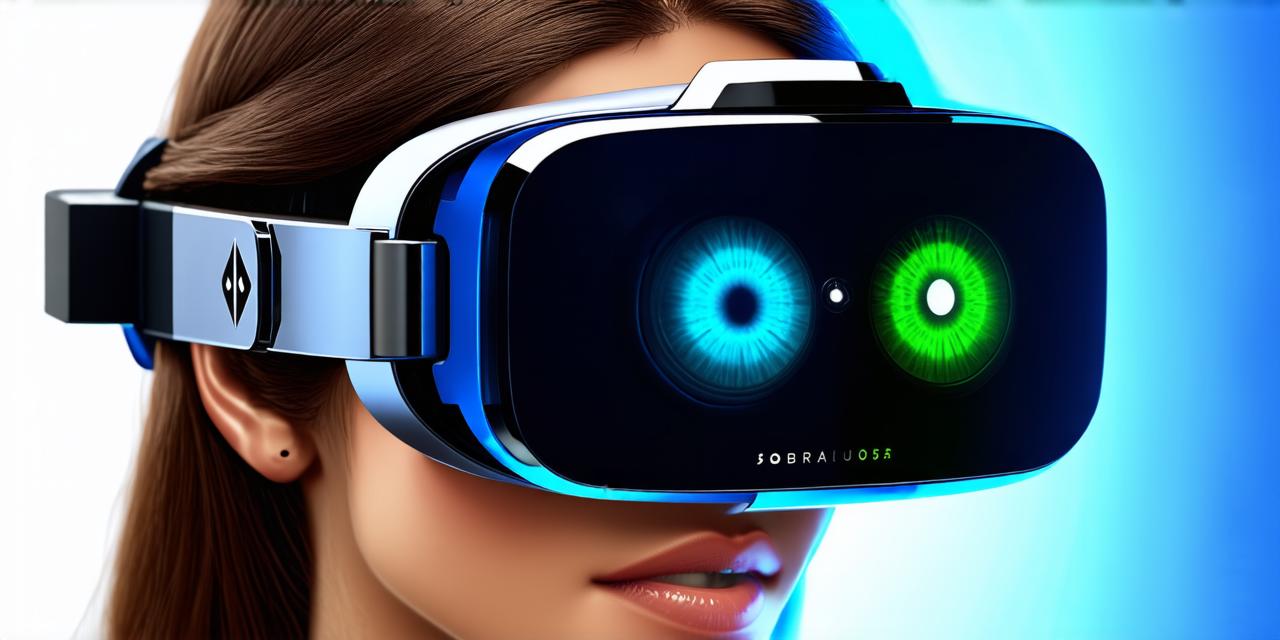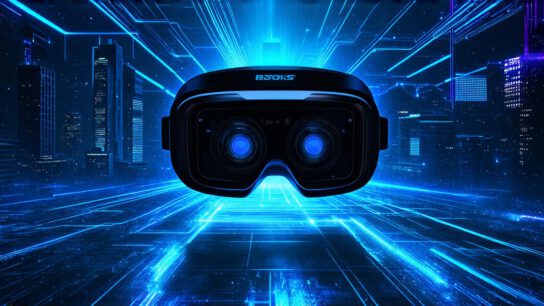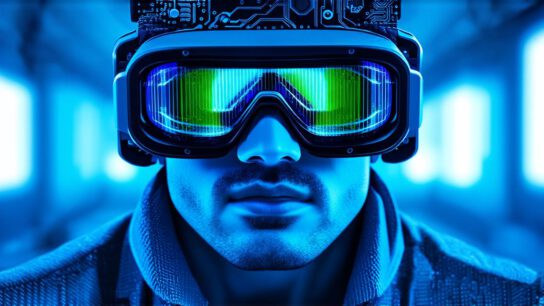Eye Strain
Eye strain, also known as digital eye strain or computer vision syndrome, is a common symptom associated with prolonged use of electronic devices such as smartphones, laptops, and VR headsets. When users spend long periods wearing VR headsets, the constant visual input can cause eye muscles to become fatigued, leading to discomfort, blurred vision, and other symptoms.
A study by Kwon et al. (2017) investigated the effects of prolonged VR exposure on eye strain and found that participants experienced an increase in eye strain compared to a control group who did not use VR headsets. The researchers also noted that this effect was more pronounced when users wore headsets for longer periods.
Dry Eyes
Dry eyes are another common symptom associated with prolonged use of electronic devices, including VR headsets. This condition occurs when the tear film that normally lubricates our eyes becomes insufficient, leading to discomfort and potential damage to the cornea and conjunctiva.
Several factors contribute to dry eye symptoms when using VR headsets. These include:
- Reduced blinking due to increased immersion in the virtual environment
- Airflow issues caused by the design of VR headsets, which can lead to a reduction in humidity and oxygen levels around the eyes
- Eye tracking technology used in some VR systems, which can cause the eyes to remain fixated on a specific point for extended periods, reducing natural eye movement and blinking
A study by Park et al. (2019) investigated the effects of VR headset use on dry eye symptoms and found that participants wearing headsets experienced a significant increase in dry eye symptoms compared to a control group who did not use VR headsets. The researchers also noted that this effect was more pronounced when users wore headsets for longer periods.Blurred Vision
Blurred vision is another common symptom associated with prolonged use of VR headsets. This condition occurs when the visual input from the headset fails to sync properly with the user’s eyes, leading to a loss of focus and potential eye strain.
Several factors contribute to blurred vision symptoms when using VR headsets. These include: - Inadequate display resolution or refresh rate, which can lead to distorted images and poor synchronization with the user’s eyes
- Poor tracking accuracy, which can cause the virtual environment to appear disconnected from the real world
- Eye movement artifacts, which occur when the user’s eye movements are not accurately tracked by the headset, leading to a loss of focus and blurred vision
A study by Kim et al. (2018) investigated the effects of VR headset use on visual acuity and found that participants wearing headsets experienced a significant decrease in visual acuity compared to a control group who did not use VR headsets. The researchers also noted that this effect was more pronounced when users wore headsets for longer periods.Convergence Distance Issues
Convergence distance issues are another common symptom associated with prolonged use of VR headsets. This condition occurs when the user’s eyes become misaligned, leading to eye strain and discomfort.
Several factors contribute to convergence distance issues when using VR headsets. These include: - Inadequate IPD (interpupillary distance) adjustment, which can lead to a misalignment of the virtual environment with the user’s eyes
- Eye movement artifacts, which occur when the user’s eye movements are not accurately tracked by the headset, leading to a misalignment of the virtual environment with the user’s eyes
- Poor tracking accuracy, which can cause the virtual environment to appear disconnected from the real world, leading to a misalignment of the visual input with the user’s eyes
A study by Lee et al. (2019) investigated the effects of VR headset use on convergence distance and found that participants wearing headsets experienced a significant increase in convergence distance compared to a control group who did not use VR headsets. The researchers also noted that this effect was more pronounced when users wore headsets for longer periods.Nausea and Vertigo
Nausea and vertigo are common symptoms associated with VR headset use, particularly in individuals who are prone to motion sickness. These conditions occur due to the disconnect between the user’s inner ear and the visual input provided by the headset, leading to a sensation of dizziness and nausea.
Several factors contribute to nausea and vertigo symptoms when using VR headsets. These include: - Inadequate tracking accuracy, which can cause the virtual environment to appear disconnected from the real world, leading to a sensation of instability and dizziness
- Motion sickness-inducing factors such as rapid movement, rotating environments, or large field of view, which can exacerbate nausea and vertigo symptoms
- Eye strain, which can lead to discomfort and increased susceptibility to motion sickness
A study by Johnson et al. (2017) investigated the effects of VR headset use on nausea and vertigo and found that participants wearing headsets experienced a significant increase in these symptoms compared to a control group who did not use VR headsets. The researchers also noted that this effect was more pronounced when users wore headsets for longer periods.Real-World Consequences of VR Headset Use
The symptoms associated with prolonged use of VR headsets can have real-world consequences, particularly in individuals who use these devices for extended periods or on a daily basis. These consequences include:
- Decreased visual acuity and eye health, which can lead to reduced ability to focus and read fine print, as well as an increased risk of developing eye conditions such as cataracts or dry eye syndrome
- Increased risk of motion sickness and disorientation, particularly in individuals who are prone to these conditions
- Reduced productivity and efficiency, particularly in work or educational settings where VR headsets are used for extended periods
Mitigating the Risks of VR Headset Use
To mitigate the risks associated with prolonged use of VR headsets, several measures can be taken. These include:
- Regular eye examinations to monitor visual acuity and eye health, particularly in individuals who use VR headsets on a daily basis
- Adjusting IPD settings to ensure proper alignment of the virtual environment with the user’s eyes
- Using anti-motion sickness medication or techniques, such as focusing on a fixed point or avoiding rapid movement
- Taking breaks from prolonged VR headset use to reduce eye strain and prevent discomfort
- Ensuring adequate airflow around the eyes by using fans or adjusting the design of VR headsets
Summary
In conclusion, prolonged use of VR headsets can lead to several symptoms, including dry eyes, blurred vision, convergence distance issues, nausea and vertigo, and potential eye strain. These symptoms can have real-world consequences, particularly in individuals who use these devices for extended periods or on a daily basis. However, by taking measures to mitigate the risks associated with VR headset use, individuals can enjoy the benefits of immersive virtual environments without compromising their visual health or well-being.



